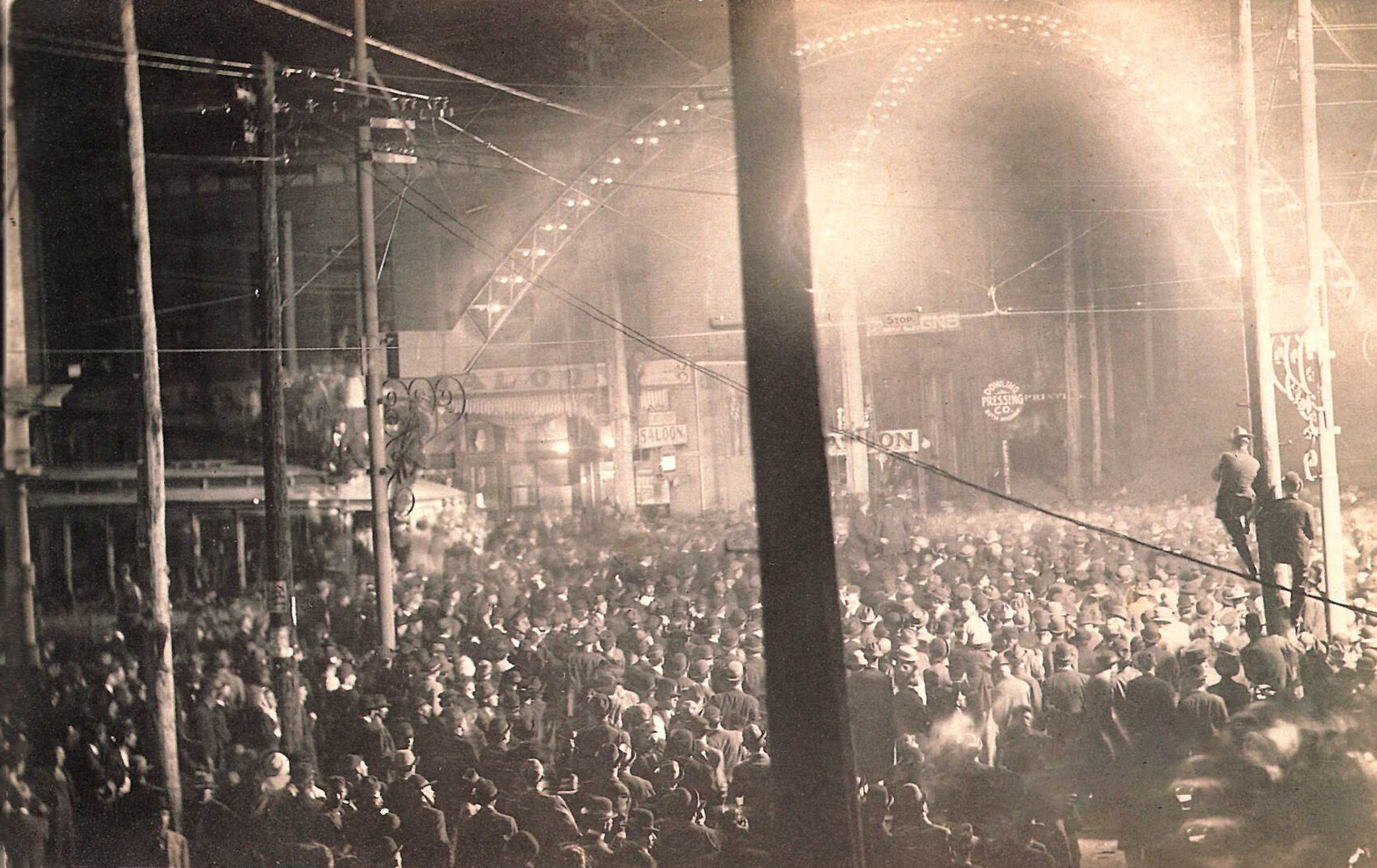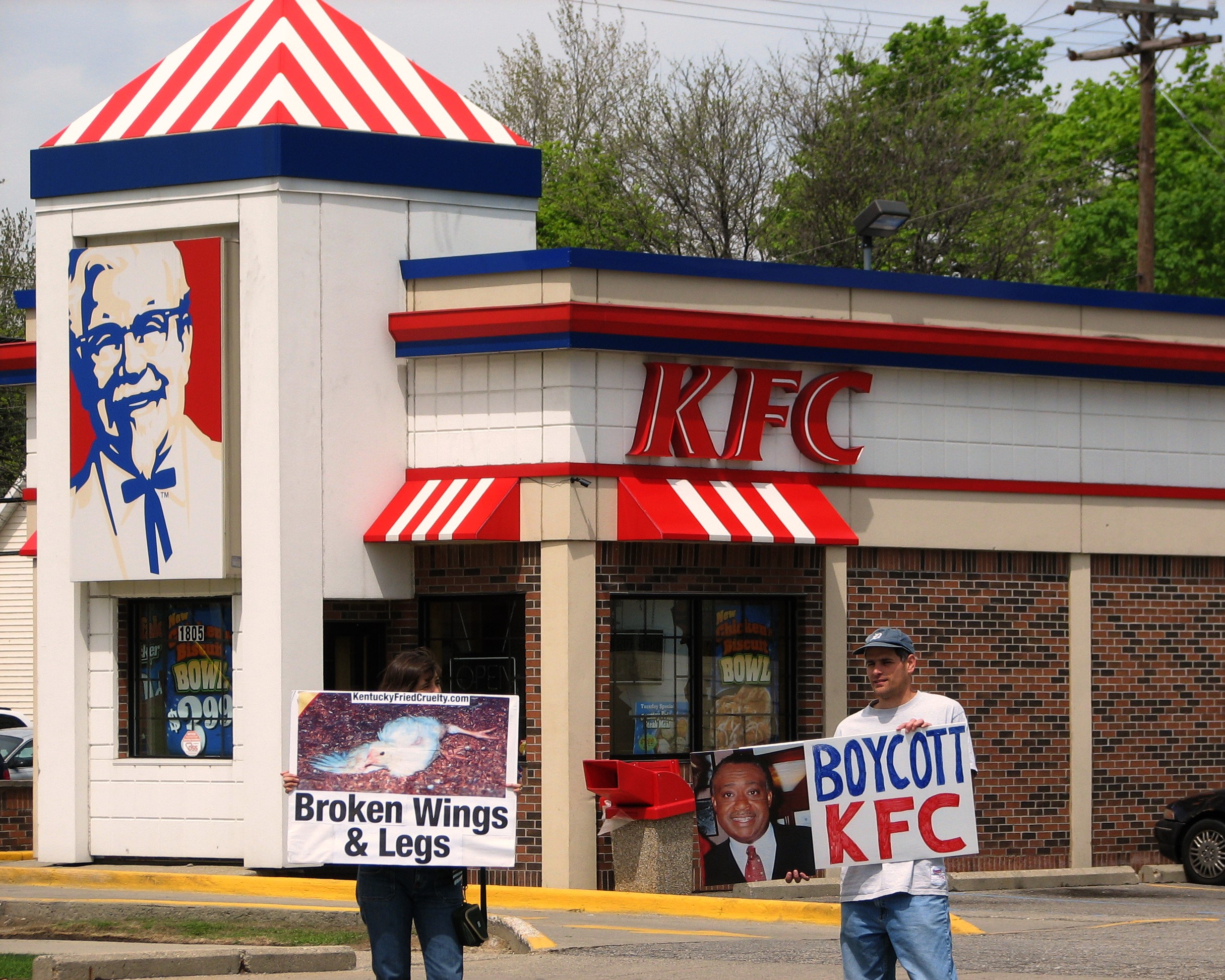|
Seattle School Boycott Of 1966
The Seattle school boycott of 1966 was a protest against racial segregation in the Seattle Public Schools. On March 31 and April 1, thousands of students left classes at their public schools, with the large majority of them attending community Freedom Schools instead. History Parents, civil-rights groups, and community organizations had spent years pushing the city to improve the public education system and make Seattle schools equitable for all children. They challenged the structure that concentrated children of color disproportionately in a few under-funded schools and demanded that the district improve the quality of these schools. However, they were unable to persuade the majority-white school board to deal with the issue. After years of frustration with city officials, a coalition of organizations led by the Central Area Civil Rights Committee (CACRC), the Congress of Racial Equality (CORE), and the National Association for the Advancement of Colored People (NAACP) organize ... [...More Info...] [...Related Items...] OR: [Wikipedia] [Google] [Baidu] |
Seattle Public Schools
Seattle Public Schools is the largest public school district in the state of Washington. The school district serves almost all of Seattle. Additionally it includes sections of Boulevard Park and Tukwila. As of 2018, 113 schools are operated by the district, which serve at least 47,000 students throughout the city. Governance The board of directors for Seattle Public Schools is an elected body representing seven geographical regions, known as Districts, within the City of Seattle. The length of the term is four years. Board meetings are generally held twice monthly. For the 2019–2020 school year (until COVID-19 disruptions), board meetings were scheduled for the first and third Wednesdays of each month, at 4:15 p.m., with some exceptions. Its headquarters are in the John Stanford Center for Educational Excellence. History Thomas E. Peiser photographed a 1905 historical marker commemorating the site of Seattle's first school. According to the marker: On this spot the ... [...More Info...] [...Related Items...] OR: [Wikipedia] [Google] [Baidu] |
Freedom Schools
Freedom Schools were temporary, alternative, and free schools for African Americans mostly in the South. They were originally part of a nationwide effort during the Civil Rights Movement to organize African Americans to achieve social, political and economic equality in the United States. The most prominent example of Freedom Schools was in Mississippi during the summer of 1964. Origins Despite the Supreme Court's ruling of 1954 in the '' Brown v. Board of Education'' case striking down segregated school systems, in the mid-1960s Mississippi still maintained separate and unequal white and "colored" school systems. On average, the state spent $81.66 to educate a white student compared to only $21.77 for a black student. Mississippi was one of only two states in the union that did not have a mandatory education law and many children in rural areas were sent to work in the fields and received little education at all. Even the curriculum was different for white and black. As a typical ... [...More Info...] [...Related Items...] OR: [Wikipedia] [Google] [Baidu] |
Congress Of Racial Equality
The Congress of Racial Equality (CORE) is an African-American civil rights organization in the United States that played a pivotal role for African Americans in the civil rights movement. Founded in 1942, its stated mission is "to bring about equality for all people regardless of race, creed, sex, age, disability, sexual orientation, religion or ethnic background." History Founding CORE was founded in Chicago, Illinois, in March 1942. The organization's founding members included James Leonard Farmer Jr., Anna Pauline "Pauli" Murray, George Mills Houser, Elsie Bernice Fisher and Homer A. Jack. Of the 50 original founding members, 28 were men and 22 were women, roughly one-third of them were Black and the other two-thirds white. Bayard Rustin, while not a founding member of the organization, was (as Farmer and Houser later noted) "an uncle to CORE" and provided it with significant support. The group had evolved out of the pacifist Fellowship of Reconciliation, and sough ... [...More Info...] [...Related Items...] OR: [Wikipedia] [Google] [Baidu] |
National Association For The Advancement Of Colored People
The National Association for the Advancement of Colored People (NAACP) is a civil rights organization in the United States, formed in 1909 as an interracial endeavor to advance justice for African Americans by a group including W. E. B. Du Bois, Mary White Ovington, Moorfield Storey and Ida B. Wells. Leaders of the organization included Thurgood Marshall and Roy Wilkins. Its mission in the 21st century is "to ensure the political, educational, social, and economic equality of rights of all persons and to eliminate race-based discrimination". National NAACP initiatives include political lobbying, publicity efforts and litigation strategies developed by its legal team. The group enlarged its mission in the late 20th century by considering issues such as police misconduct, the status of black foreign refugees and questions of economic development. Its name, retained in accordance with tradition, uses the once common term '' colored people,'' referring to th ... [...More Info...] [...Related Items...] OR: [Wikipedia] [Google] [Baidu] |
Chicago Public Schools Boycott
The Chicago Public Schools boycott, also known as Freedom Day, was a mass boycott and demonstration against the segregationist policies of the Chicago Public Schools (CPS) on October 22, 1963. More than 200,000 students stayed out of school, and tens of thousands of Chicagoans joined in a protest that culminated in a march to the office of the Chicago Board of Education. The protest preceded the larger New York City public school boycott, also known as Freedom Day. History Although ''Brown v. Board of Education'' prohibited racial segregation in schools, in 1963, Chicago's public schools continued to be segregated as a result of residential segregation. This was exacerbated by the migration of more black Americans from the Southern United States to Chicago during the Jim Crow era. School boundary lines were drawn specifically to preserve racial segregation, even as predominantly black schools grew overcrowded. Classes were held in hallways, and there were not enough books for a ... [...More Info...] [...Related Items...] OR: [Wikipedia] [Google] [Baidu] |
New York City School Boycott
The New York City school boycott, referred to as Freedom Day, was a large-scale boycott and protest against segregation in the New York City public school system which took place on February 3, 1964. Students and teachers walked out to highlight the deplorable conditions at public schools in the city, and demonstrators held rallies demanding school integration. It has been described as the largest civil rights protest of the 1960s, involving nearly half a million participants. Historical context Freedom Day was part of a larger effort by activists to target the New York City Board of Education through acts of civil disobedience for their failure to implement a reasonable integration plan. The protest followed the smaller Chicago Public Schools boycott, also known as Freedom Day, which took place in October 1963. Although school segregation had been illegal in New York City since 1920, housing patterns and continuing ''de facto'' segregation meant schools remained raciall ... [...More Info...] [...Related Items...] OR: [Wikipedia] [Google] [Baidu] |
1966 In Washington (state)
Events January * January 1 – In a coup, Colonel Jean-Bédel Bokassa takes over as military ruler of the Central African Republic, ousting President David Dacko. * January 3 – 1966 Upper Voltan coup d'état: President Maurice Yaméogo is deposed by a military coup in the Republic of Upper Volta (modern-day Burkina Faso). * January 10 ** Pakistani–Indian peace negotiations end successfully with the signing of the Tashkent Declaration, a day before the sudden death of Indian prime minister Lal Bahadur Shastri. ** Georgia House of Representatives, The House of Representatives of the US state of Georgia refuses to allow African-American representative Julian Bond to take his seat, because of his anti-war stance. ** A Commonwealth Prime Ministers' Conference convenes in Lagos, Nigeria, primarily to discuss Rhodesia. * January 12 – United States President Lyndon Johnson states that the United States should stay in South Vietnam until Communism, Communist aggression there is ... [...More Info...] [...Related Items...] OR: [Wikipedia] [Google] [Baidu] |
1966 Protests
Events January * January 1 – In a coup, Colonel Jean-Bédel Bokassa takes over as military ruler of the Central African Republic, ousting President David Dacko. * January 3 – 1966 Upper Voltan coup d'état: President Maurice Yaméogo is deposed by a military coup in the Republic of Upper Volta (modern-day Burkina Faso). * January 10 ** Pakistani–Indian peace negotiations end successfully with the signing of the Tashkent Declaration, a day before the sudden death of Indian prime minister Lal Bahadur Shastri. ** The House of Representatives of the US state of Georgia refuses to allow African-American representative Julian Bond to take his seat, because of his anti-war stance. ** A Commonwealth Prime Ministers' Conference convenes in Lagos, Nigeria, primarily to discuss Rhodesia. * January 12 – United States President Lyndon Johnson states that the United States should stay in South Vietnam until Communist aggression there is ended. * January 15 – 1966 Nigerian co ... [...More Info...] [...Related Items...] OR: [Wikipedia] [Google] [Baidu] |
Civil Rights Movement
The civil rights movement was a nonviolent social and political movement and campaign from 1954 to 1968 in the United States to abolish legalized institutional Racial segregation in the United States, racial segregation, Racial discrimination in the United States, discrimination, and disenfranchisement in the United States, disenfranchisement throughout the United States. The movement had its origins in the Reconstruction era during the late 19th century, although it made its largest legislative gains in the 1960s after years of direct actions and grassroots protests. The social movement's major nonviolent resistance and civil disobedience campaigns eventually secured new protections in federal law for the civil rights of all Americans. After the American Civil War and the subsequent Abolitionism in the United States, abolition of slavery in the 1860s, the Reconstruction Amendments to the United States Constitution granted emancipation and constitutional rights of citizenship ... [...More Info...] [...Related Items...] OR: [Wikipedia] [Google] [Baidu] |
History Of Washington (state)
The history of Washington includes thousands of years of Native American history before Europeans arrived and began to establish territorial claims. The region was part of Oregon Territory from 1848 to 1853, after which it was separated from Oregon and established as Washington Territory following the efforts at the Monticello Convention. On November 11, 1889, Washington became the 42nd state of the United States. Prehistory and cultures Archaeological evidence shows that the Pacific Northwest was one of the first populated areas in North America. Both animal and human bones dating back to 13,000 years old have been found across Washington and evidence of human habitation in the Olympic Peninsula dates back to approximately 9,000 BCE, 3,000 to 5,000 years after massive flooding of the Columbia River which carved the Columbia Gorge. Anthropologists estimate there were 125 distinct Northwest tribes and 50 languages and dialects in existence before the arrival of Euro-Americans ... [...More Info...] [...Related Items...] OR: [Wikipedia] [Google] [Baidu] |
Boycotts
A boycott is an act of nonviolent resistance, nonviolent, voluntary abstention from a product, person, organization, or country as an expression of protest. It is usually for moral, society, social, politics, political, or Environmentalism, environmental reasons. The purpose of a boycott is to inflict some economic loss on the target, or to indicate a moral outrage, to try to compel the target to alter an objectionable behavior. The word is named after Captain Charles Boycott, agent of an absentee landlord in Ireland, against whom the tactic was successfully employed after a suggestion by Irish nationalist leader Charles Stewart Parnell and his Irish Land League in 1880. Sometimes, a boycott can be a form of consumer activism, sometimes called moral purchasing. When a similar practice is legislated by a national government, it is known as a Economic sanctions, sanction. Frequently, however, the threat of boycotting a business is an empty threat, with no significant effect on s ... [...More Info...] [...Related Items...] OR: [Wikipedia] [Google] [Baidu] |



